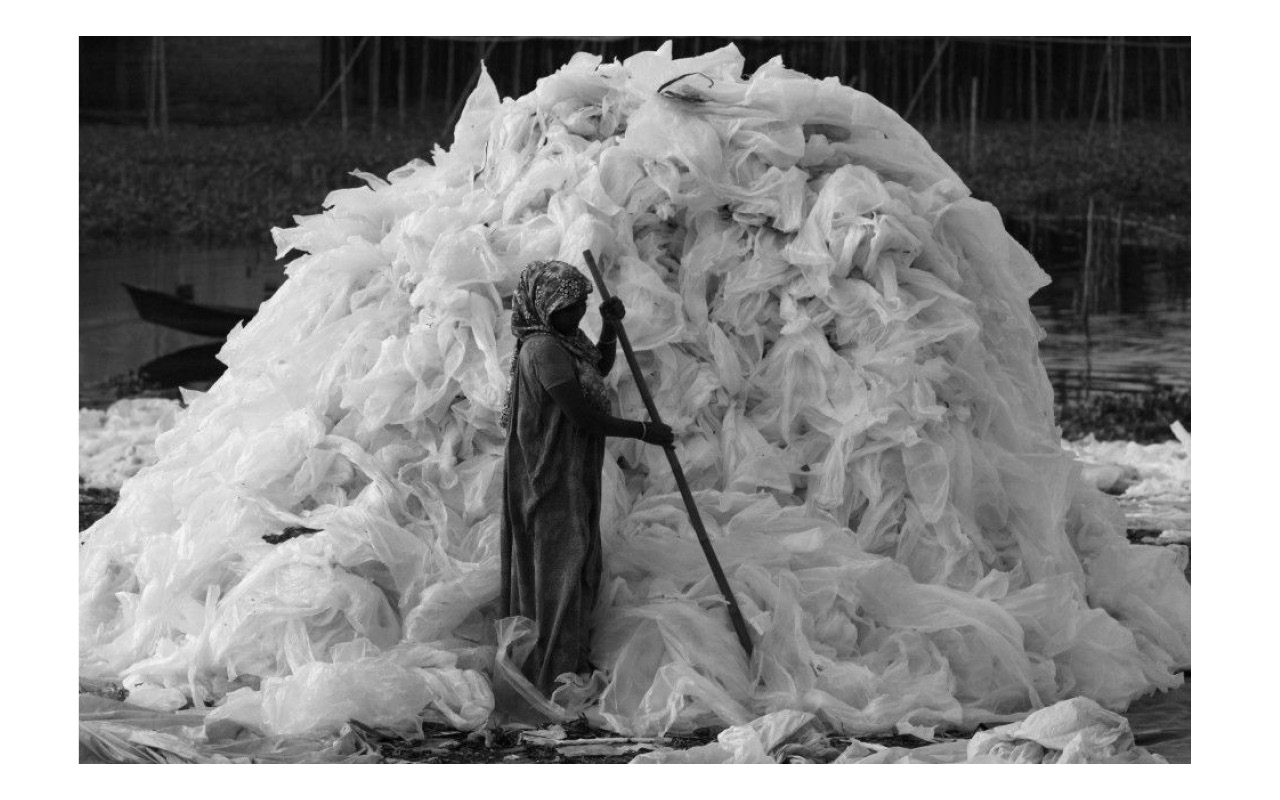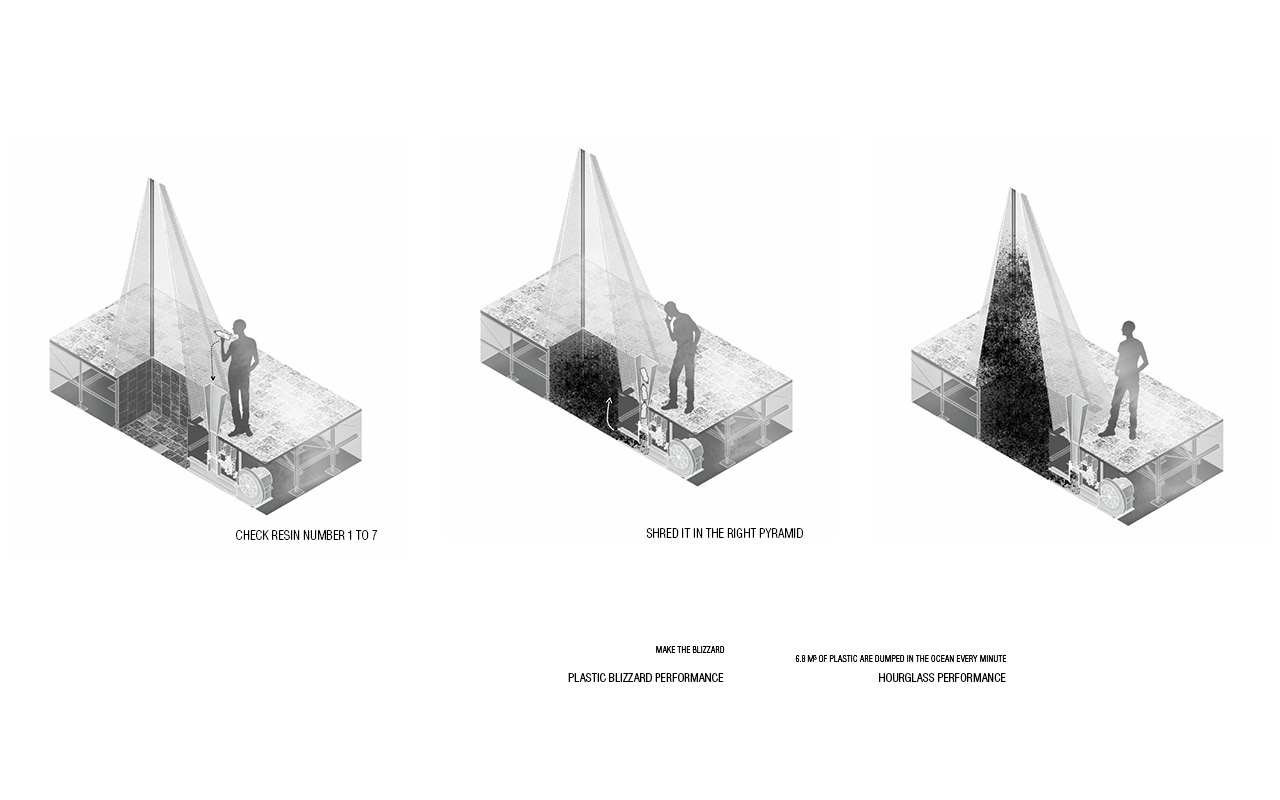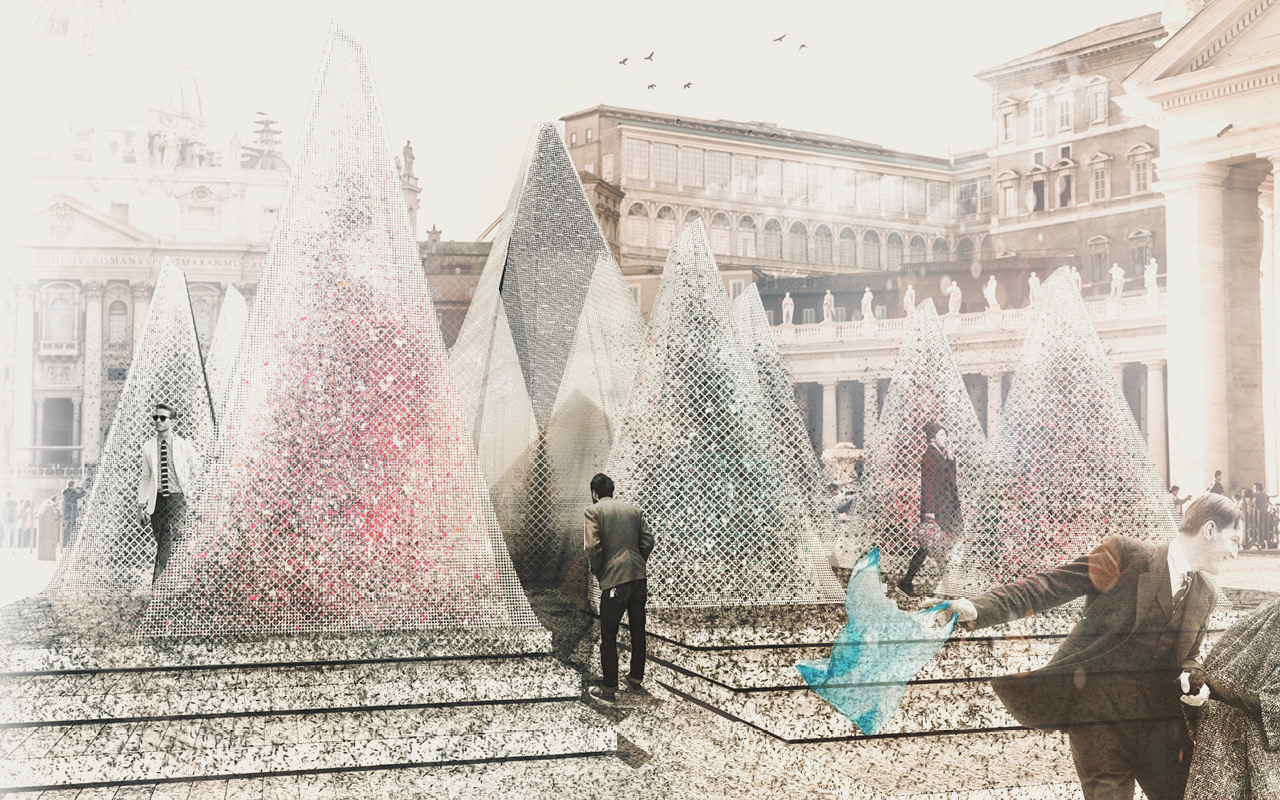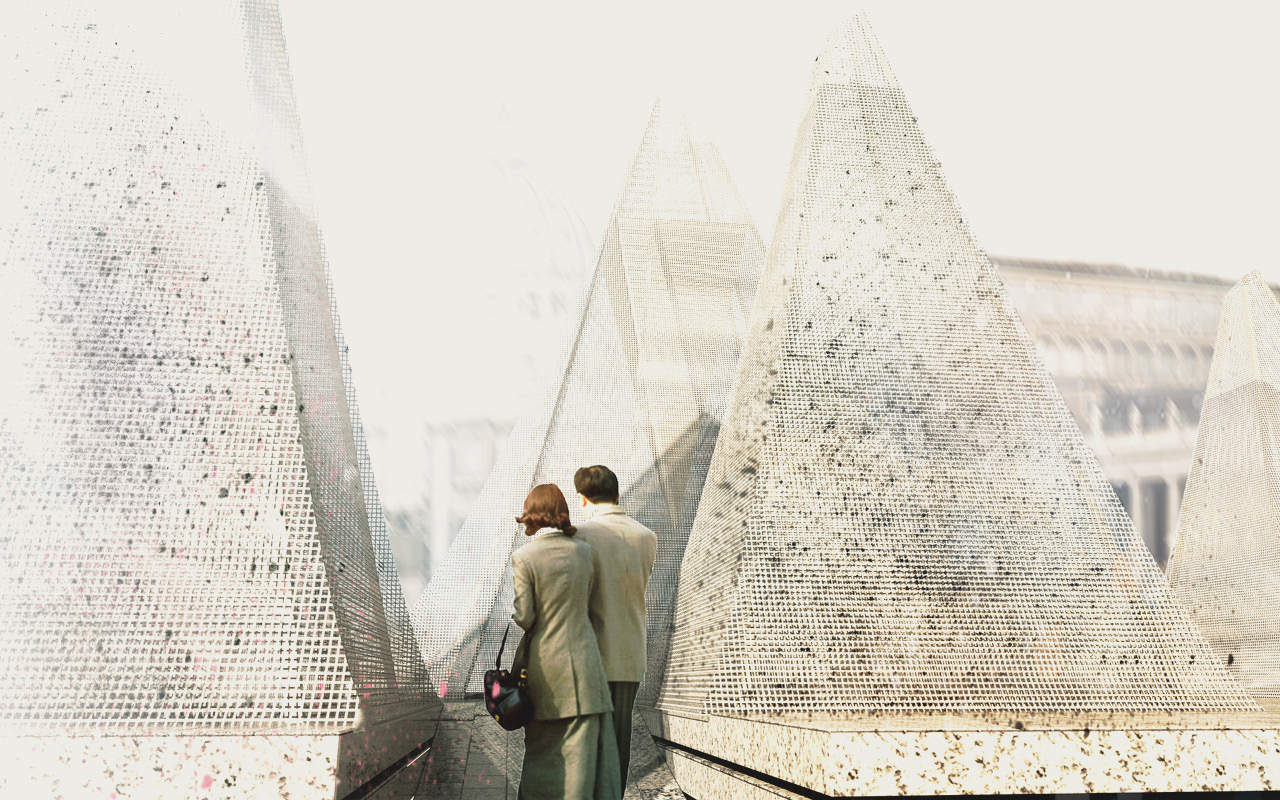︎︎︎︎︎︎︎︎︎︎︎︎︎︎︎
Plastic Wonder
Italy
2019
Stratification
Performances
︎︎︎︎︎︎︎︎︎︎︎︎︎︎︎
Team: Cristina Morbi, Kristina Michkute, Laura Rigoni




︎︎︎︎︎︎︎︎︎︎︎︎︎︎︎︎
All throughout the world, one of the most relevant misconceptions is that all plastic is simply just plastic. Yet, due to different chemical compositions and varying properties, plastic is extremely varying and has actually been categorised into 7 different main types. Each one has different properties, and as a result different decomposition lifetime. Thus, each one requires different ways of disposing – some plastics are possible to recycle and reuse, whereas others are currently non-recyclable and end up in landfills. Only a small percentage of people are aware of the differentiated plastic numbering system – from type 1 to 7.
Seven Plastic Wonders of the World (+1), as the name may hint, draws parallels between one of the most recognised historical phenomena, and the current worldwide situation. In the 20th century, the new symbol of modern society was to become Plastic. 7 types of plastic - to revolutionise the way we interact with the world, to build a new society. But as time and societal turbulence have taken a toll on six of the original Seven Wonders of the World, so has our perception of Plastic shifted from pinnacle to disaster.
The spatial installation performance
We propose a large installation composed of 8 separate structures: 7 structures to represent each of the seven different types of plastics, and the 8th - to represent the new generation degradable plastic PHA, which from first glance may be perceived just as regular type of plastic, yet which is produced and performs completely differently. To create the artificial plastic ‘storm’ we would encourage people to bring their domestic plastic waste to the installation to contribute in creating the plastic ‘climate performance’.
7 pyramids.
The seven types of different plastic are:
1. Polyethylene Terephthalate (PETE or PET)
2. High-Density Polyethylene (HDPE)
3. Polyvinyl Chloride (PVC)
4. Low-Density Polyethylene (LDPE)
5. Polypropylene (PP)
6. Polystyrene or Styrofoam (PS)
7. Miscellaneous plastics (includes polycarbonate, polylactide, acrylic, acrylonitrile butadiene, styrene, fiberglass, and nylon)
These seven structures would compose a monumental visual ‘landscape’, which would be continuously dynamic, and change depending on participant interaction.



The seven smaller
structures would all have the same main mechanic component – a plastic shredder.
Spectators would be compelled to take a second look at plastic items they
brought to the installation to find which type of plastic they are, and to
shred them in the shredder of the corresponding pyramid. Shredding of the
plastic would produce small plastic particles that, through the use of air pump
outlets installed at the base of each pyramid, would circulate inside the
closed pyramid volume to create a visual ‘storm’.
Depending on how much of each plastic participants bring to the installation, the different pyramids would have varying internal material occupancy. The material collected in each pyramid (hence the intensity of the ‘blizzard) would visually correspond with the varying amounts of each type of plastic people use daily, intuitively easily comprehensible and comparable between one another.
The centrepiece of the main pyramid would be based on the hourglass principle – a hopper that would hold PHA pellets, which, through a predetermined sized hole at the bottom of the container, would drop at a fixed rate into a recessed rectangular pool below.
We propose that the whole performative installation would last 1 month, during which visitors would continuously be able to interact with the installation by bringing and shredding their domestic plastic waste. The plastics hourglass would perform throughout the whole period, on the last day culminating with the pool completely filled with plastic granules.
Depending on how much of each plastic participants bring to the installation, the different pyramids would have varying internal material occupancy. The material collected in each pyramid (hence the intensity of the ‘blizzard) would visually correspond with the varying amounts of each type of plastic people use daily, intuitively easily comprehensible and comparable between one another.
The centrepiece of the main pyramid would be based on the hourglass principle – a hopper that would hold PHA pellets, which, through a predetermined sized hole at the bottom of the container, would drop at a fixed rate into a recessed rectangular pool below.
We propose that the whole performative installation would last 1 month, during which visitors would continuously be able to interact with the installation by bringing and shredding their domestic plastic waste. The plastics hourglass would perform throughout the whole period, on the last day culminating with the pool completely filled with plastic granules.
